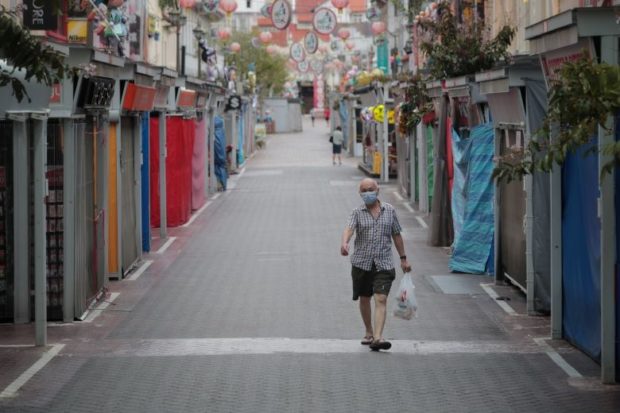
Singapore must also put in place a system to allow it to reopen safely. The Straits Times/Asia News Network/JASON QUAH
SINGAPORE — Singapore must dig in for a long battle against the coronavirus outbreak but will consider further easing the circuit breaker measures in a month’s time, if the situation improves, Parliament was told on Monday (May 4).
“The fight is far from over. This battle against the virus is not a sprint; it is a marathon, and we are not even at the halfway mark,” said National Development Minister Lawrence Wong.
He was one of three ministers who delivered statements on Singapore’s response to the Covid-19 outbreak on Monday in Parliament, where all MPs donned face masks for the first time.
The ministers stressed that Singapore was not yet out of the woods, though some progress had been made. Mr Wong said: “If you have done a marathon, you will know that the second half is typically harder than the first, so we must expect more challenges ahead.”
He added that the Government has taken a calibrated approach rather than imposing a “full lockdown”, as there are substantial social and economic costs to keeping everyone at home.
“That is why we considered very carefully before we decided to implement the circuit breaker, and later to extend it for a month,” he said. “In the end, we decided we had to proceed with this move, so as to break the transmission chain and slow down the spread of the virus.”
He stressed that when some circuit breaker measures are eased in the coming weeks, it should not be taken as a signal to go out more.
Health Minister Gan Kim Yong said circuit breaker measures could be eased further in a month’s time if the number of cases in the wider community remains low and those in migrant worker dormitories come clearly under control.
The country also needs to drastically ramp up its capacity to test for the virus, Mr Gan said, adding that there are plans to increase testing capacity to up to 40,000 a day from 8,000 now.
The Government will look at three factors before deciding what to do next, Mr Gan said, adding: “Numbers are important but they are not the only thing.”
First, community transmission of the virus must be very low or stopped altogether. Cases among migrant workers in dormitories must also come down, or the country risks a spillover from this group into the wider population.
Next, the authorities will review transmission rates in other countries and the measures being taken there to contain the spread of the virus.
“For any reopening of our borders, we are likely to start small and selectively, and to continue to impose a mix of isolation and test requirements, to protect ourselves from new imported cases leading to community spread,” Mr Gan said.
Lastly, Singapore has to put in place a system to help it reopen safely. This involves ramping up the country’s testing and contact tracing capacity.
It will be “very difficult” to scale up contact tracing rapidly in the event of large clusters, and technology might hold the key to this.
Mr Gan warned that cases of infection in the community are likely to still emerge, even as the country opens up in a phased manner as the virus is very difficult to eradicate.
“What is key is to keep the number of cases small and reduce the risk of big clusters, through various safeguards and enablers,” Mr Gan added. “It will take a while before the Covid-19 outbreak subsides globally, or before a vaccine is available. Thus we will have to adapt to a new way of life and social interactions.”
On the economic front, Singapore is holding the line given the $60 billion set aside to save jobs and keep businesses afloat, said Manpower Minister Josephine Teo.
She stressed that housing standards in foreign worker dormitories have been raised over the years. But the Government will have to relook how people interact at home and in their workplaces, and this will include migrant worker dormitories.
“We are still in the heat of battle. We must be focused on bringing the outbreak under control and working out how we can exit from the circuit breaker and resume normal activities safely,” Mrs Teo added.
“When this is over, we will reflect and thoroughly look into areas where we could have done better, so that we will be better prepared the next time.”